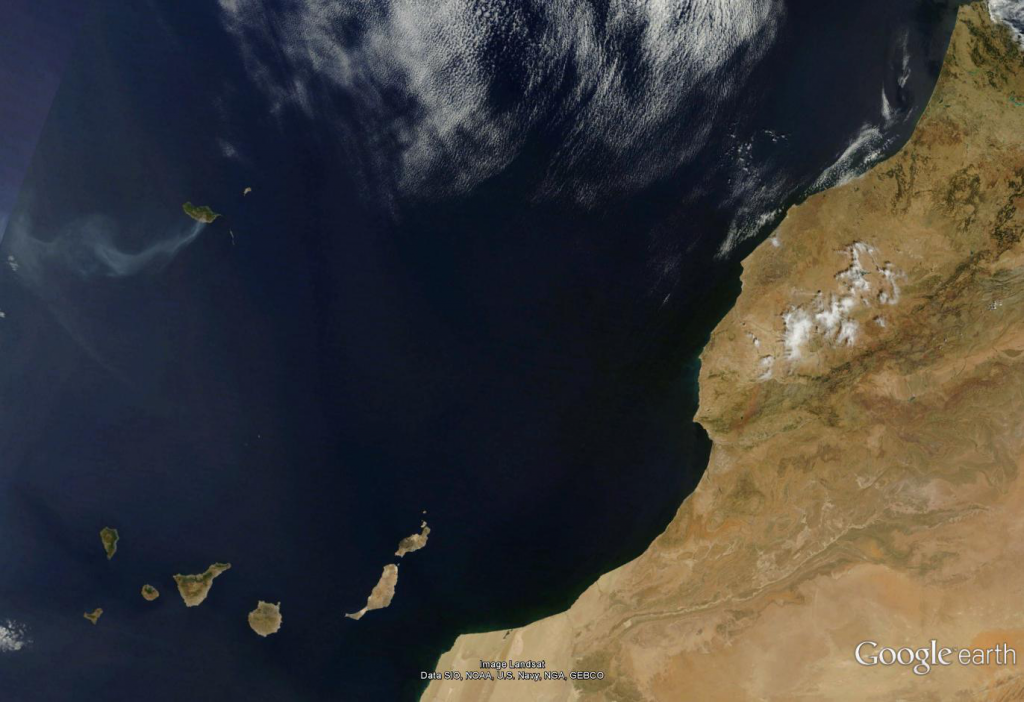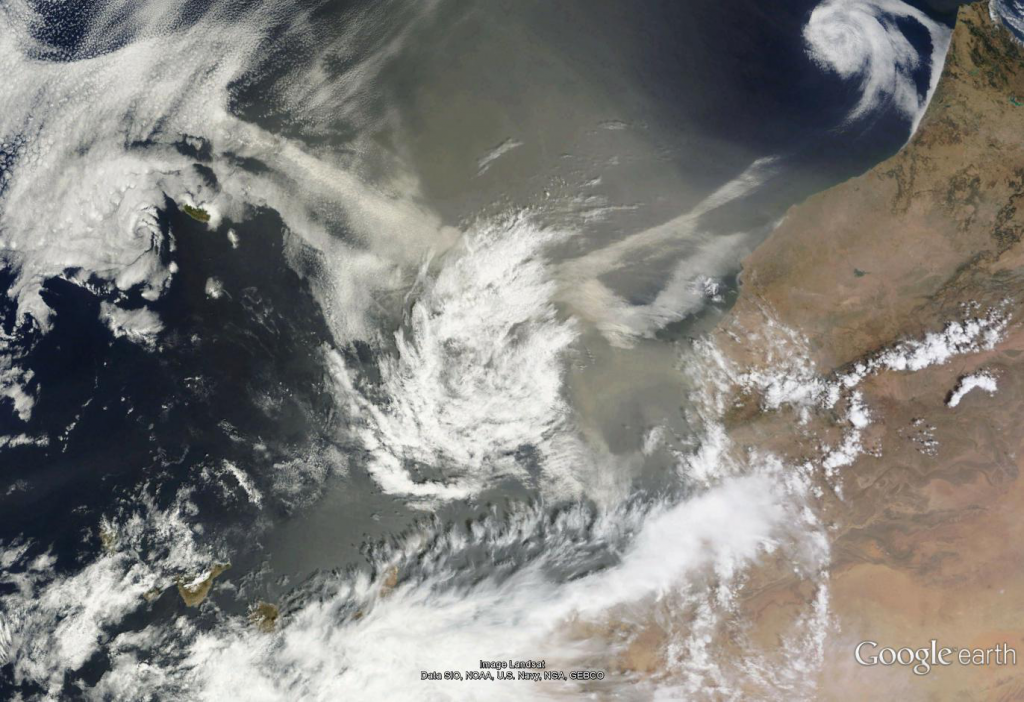A short post to illustrate the changing nature of aerosol in the atmosphere in terms of their spatial extent, source and properties. There are two images below showing the scene from the TERRA satellite as it passed over the Eastern Atlantic off the coast of Morocco. The first image shows the plume of smoke from wildfires from Madeira that swept through the island last weekend. The second image shows dust over the ocean that has likely originated from the Sahara Desert.

Image of the smoke plume from Madeira on 17th August 2013 from the Moderate Resolution Imaging Spectroradiometer (MODIS) instrument on the TERRA satellite. Image courtesy of NASA. Click on the image for a larger view.
The smoke plume is quite well defined and doesn’t cover a large geographical extent. Typically, smoke plumes are dominated by small particles (less than 1µm) with very large concentrations in the plume. As the plume blows downwind it quickly mixes with the cleaner air in the region and is diluted by this mixing process in the same way that you mix cordial with water to make squash. At the closest point to the fire, the plume is like mixing the cordial with a glass of water, whereas downwind you are progressively mixing the same amount of cordial with more and more water (e.g. a bathtub, a swimming pool, a lake). Eventually you won’t be able to make out the smoke plume visibly although that doesn’t mean that it isn’t still around – you probably need some sophisticated instruments to pick it out of the atmosphere.

Image of the dust plume on 20th August 2013 from the Moderate Resolution Imaging Spectroradiometer (MODIS) instrument on the TERRA satellite. Image courtesy of NASA. Click on the image for a larger view.
The dust plume on the other hand has a much greater geographical extent due to the much larger source region. The dust is emanating from a much larger area as high winds pick up dust from the desert and cast it into the atmosphere. In contrast to the smoke, dust plumes usually contain relatively more larger particles (for aerosols), with sizes often greater than 1µm extending up to around 100µm. In aerosol parlance, such particles are referred to as ‘coarse’. These particles generally can’t be transported as far as the smaller particles as they fall out of the atmosphere more easily. However, Saharan dust is famous for bucking this trend as it has been observed to traverse the Atlantic Ocean and reach the Amazon Rainforest. It can even make it to the UK!
These are just a couple of examples of how we can observe aerosols from space. The above are just visible images but satellite observations can provide us with more detail than this. I’m always quite amazed at what we can pick up so no doubt I will return to this in the future.
